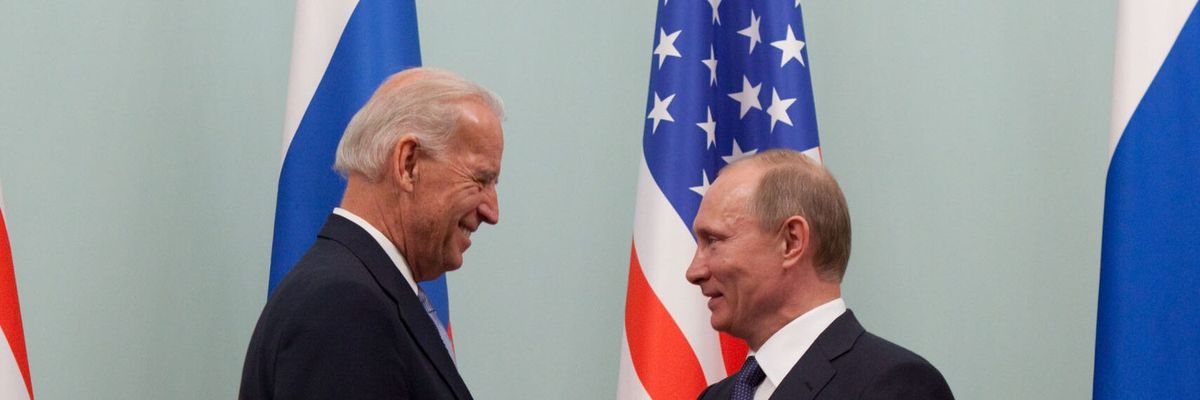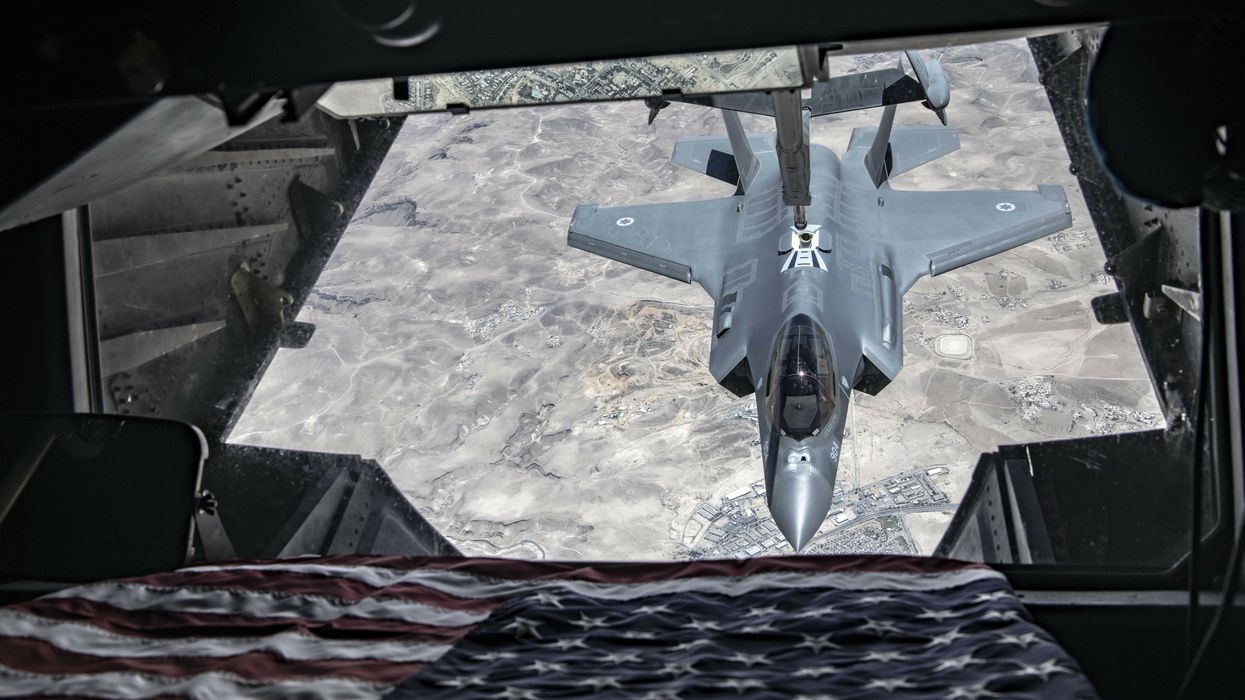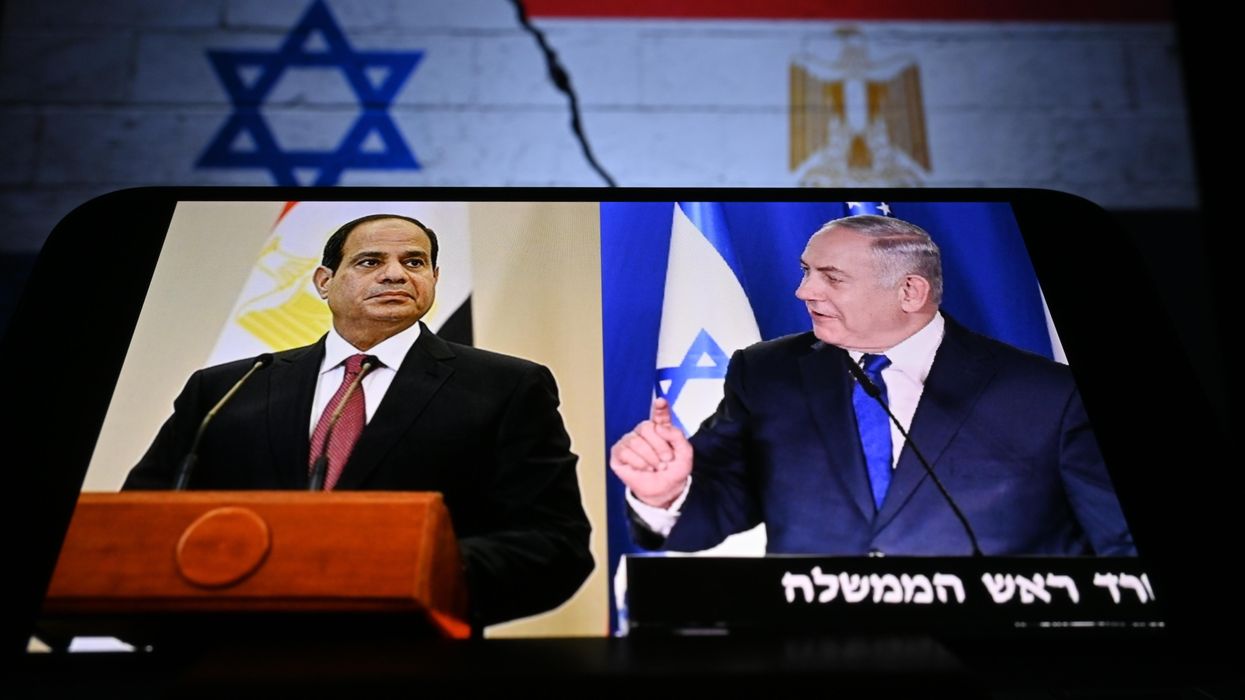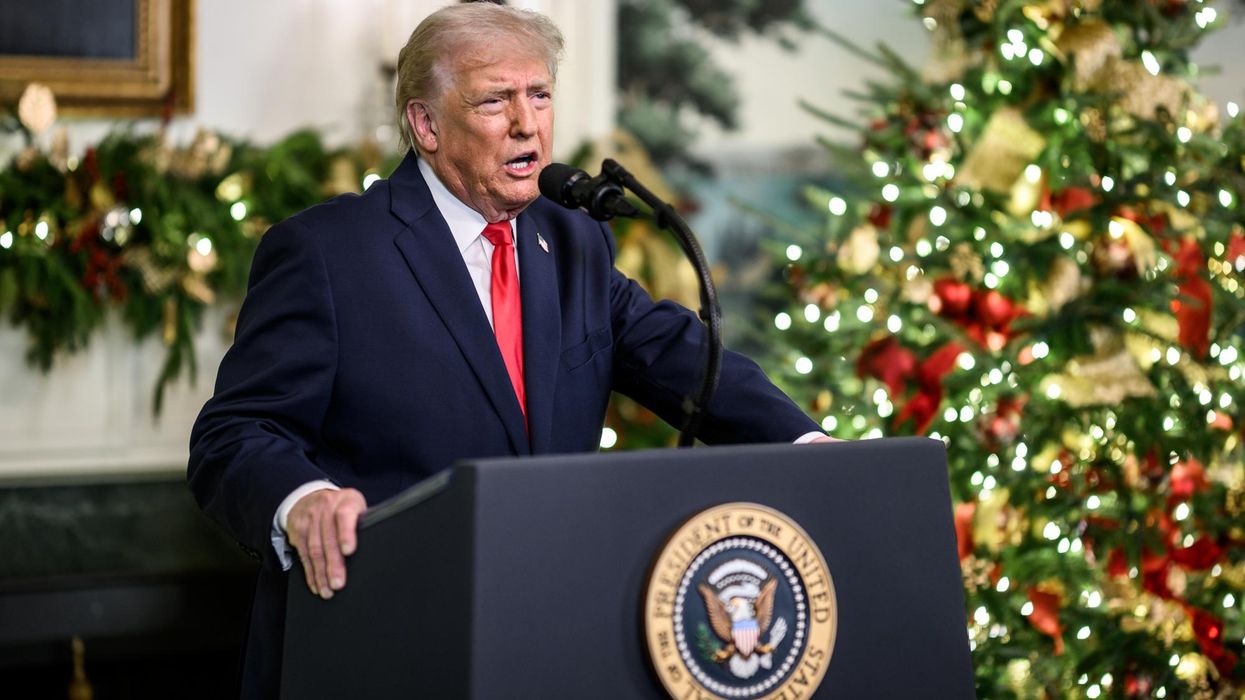More than 75 years since former U.S. President Franklin Roosevelt and Soviet Premier Joseph Stalin held the first leader-level meeting between their countries in Tehran in 1943, U.S. and Russian Presidents Joe Biden and Vladimir Putin will meet for their first presidential summit in Geneva today.
The meeting is positioned in a longer arc of nearly three dozen summits between the two countries’ leaders over the past eight decades. While some of those meetings failed and others led to transformational political outcomes and declarations, agreements, and treaties, their most common feature was to have addressed the most lethal instruments of war Moscow and Washington have at their disposal: nuclear weapons.
While Presidents Biden and Putin walk down a freshly laid red carpet at Villa La Grange, their militaries will be operating some 1,500 strategic nuclear warheads ready to be launched on short notice and capable of destroying the opposite side many times over. As the United States and Russia still possess over 90 percent of the world’s nuclear weapons, finding pathways to greater transparency, predictability, and stability on the nuclear file will be high on the agenda in the coming days.
Geneva is a symbolic location for the summit. In 1985, Presidents Ronald Reagan and Mikhail Gorbachev met for the first time in the same city, kicking off what would be the start of a critical process to reduce the risks posed by nuclear weapons. Now, a generation later, most of their achievements are gone or hang by a thread. The 1987 Intermediate-Range Nuclear Forces Treaty, which removed intermediate-range nuclear forces from the frontlines of the Cold War, no longer exists, as does the Anti-Ballistic Missile Treaty that formed part of the backbone of strategic stability between Moscow and Washington since 1972. Even a mere six months ago, the fate of the last remaining U.S.-Russian arms control treaty — the New Strategic Arms Reduction Treaty, or New START — was in doubt.
Luckily, President Biden grasped the gravity of the situation and extended New START at the last minute and invited President Putin to hold a summit. Over the last few weeks, experts and former diplomats and military figures across the Euro-Atlantic space, including Washington and Moscow, have come forward with a range of recommendations. Our conversations with these groups — such as the Euro-Atlantic Security Leadership Group, Deep Cuts Commission, and a variety of others — and relevant current officials on both sides suggest that there is growing awareness of an urgent need for a sustained dialogue on arms control between Moscow and Washington, and the impulse will have to come from Presidents Biden and Putin. The good news is that the summit will not need to produce a solution to all of the problems at hand; this would be unrealistic to expect. But for the few things the presidents should do, there is no time to lose.
First, the two leaders should reiterate the 1985 statement by Reagan and Gorbachev that a “nuclear war cannot be won and must never be fought”. During the Trump era, Moscow was keen to reiterate this statement either bilaterally or in the context of the permanent members of the U.N. Security Council, but there was resistance from the United States and, to a lesser degree, from the United Kingdom and France.
It will be important for Biden to show a departure from his predecessor’s position and agree to support the original formulation or an even stronger variant. While such a statement would be largely symbolic, it would provide a strong foundational organizing principle for continued, concerted action in the hopes of the eventual elimination of these weapons. It would also send a signal that flows down both countries’ political and military hierarchies, emphasizing the need for both sides to reduce nuclear risks.
Next, similar to what Reagan and Gorbachev did during their first summit in Geneva, Presidents Biden and Putin should use their meeting as an opportunity to kickstart strategic stability dialogue to be continued at the working level with a deadline set for progress. Such a process must begin with getting both sides on the same page on what types of systems and technologies are of greatest concern and what scenarios most negatively affect their threat perceptions, especially when it comes to dual capabilities and entanglement due to conventional-nuclear integration. To put it in terms of the latest Russian proposal, the sides will have to agree on a new “security equation” and decide how to best promote meaningful dialogue with other relevant nuclear-armed states.
Once this is done, the delegations will have to begin actual problem solving. And here, the negotiating tracks established in the 1980s could offer direct inspiration for today on how to organize such a dialogue. One track could continue to work on the bread and butter of U.S.-Russian arms control — limiting strategic nuclear forces, keeping in mind that New START expires in 2026.
The second parallel track could deal with missile defense and space security. The lines between the advanced missile defenses and anti-satellite weapons have been blurred to the extent that it does not make sense to discuss them separately. With Moscow concerned with its secure second-strike capability and Washington worried about the safety of its satellites, there just might be room for compromise.
The third and final track could deal with issues related to non-strategic nuclear weapons as well as conventional precision-guided systems. Figuring out how to deal with the fallout from the collapse of the INF Treaty would be an urgent priority here, and the Russian proposal for a mutual moratorium for deployment of such systems (with the much-discussed SSC-8/9m729 missile included) could be a starting point for discussion.
Moscow and Washington should also stop trading accusations of non-compliance and start engaging with each other to solve the implementation issues of the treaties to which they are party. For example, the Biden administration has upheld the Trump-era claim that Russia has engaged in low-yield nuclear testing in contravention of its unilateral nuclear-testing moratorium. As both countries are parties to the 1996 Comprehensive Nuclear-Test-Ban Treaty, the United States and Russia should leverage confidence building measures available under the treaty, including reciprocal test site visits to the Nevada National Security Site and Novaya Zemlya, to alleviate any current concerns. Likewise, as soon as the pandemic permits, Washington and Moscow should resume meetings of the Bilateral Consultative Commission under New START to resolve Russian concerns of potential U.S. non-compliance due to its modification of heavy bombers and missile launchers of nuclear submarines.
As former U.S. President John F. Kennedy once said, “we all live under a nuclear sword of Damocles, hanging by the slenderest of threads, capable of being cut at any moment by accident or miscalculation or by madness.” While some have noted that the U.S.–Russia relationship is like a falling knife that has to be caught before it hits the floor, the existential stakes should remind everyone that it is indeed a nuclear sword of Damocles that hangs above us. This week’s presidential summit provides a key opportunity for our leaders to take a more strategic approach to reducing nuclear risks and eliminating these weapons. There is no time to waste.
The opinions articulated above represent the views of the authors and do not necessarily reflect the position of the organizations they represent.
















